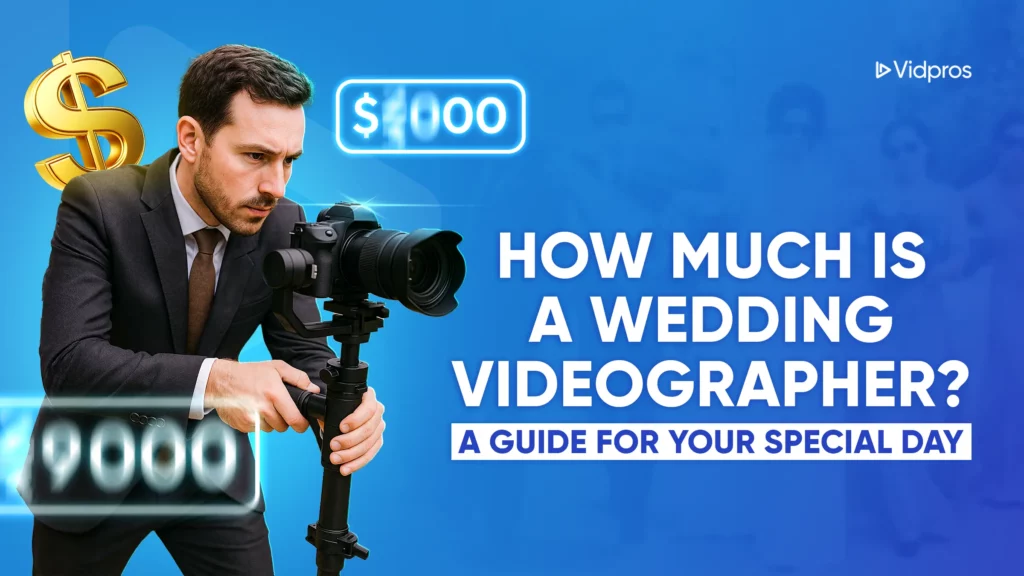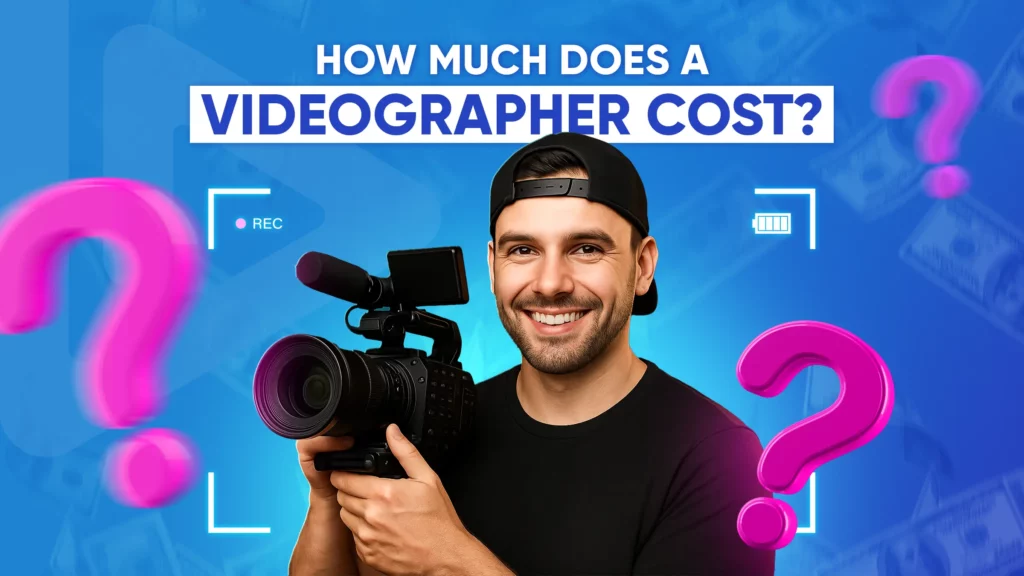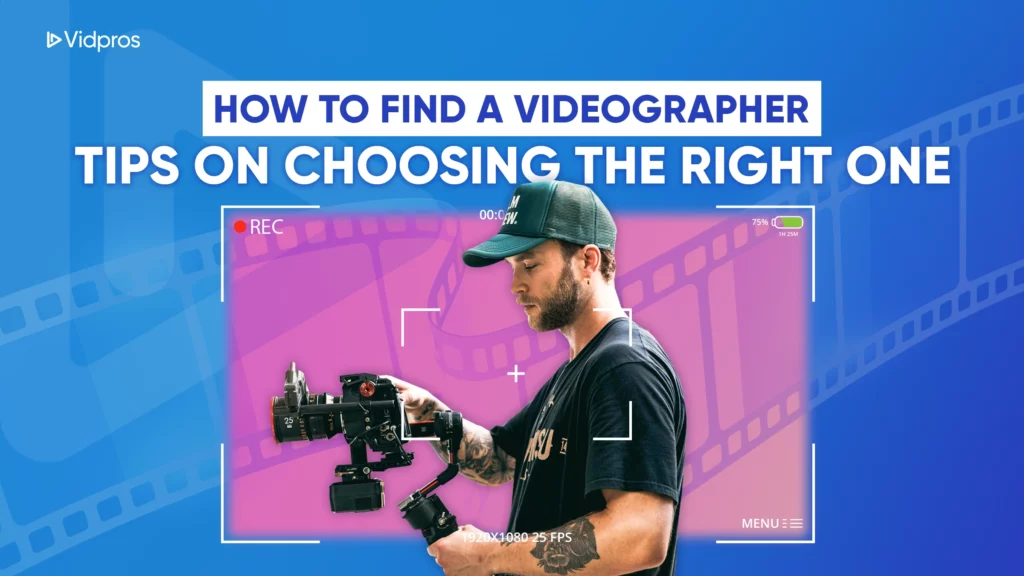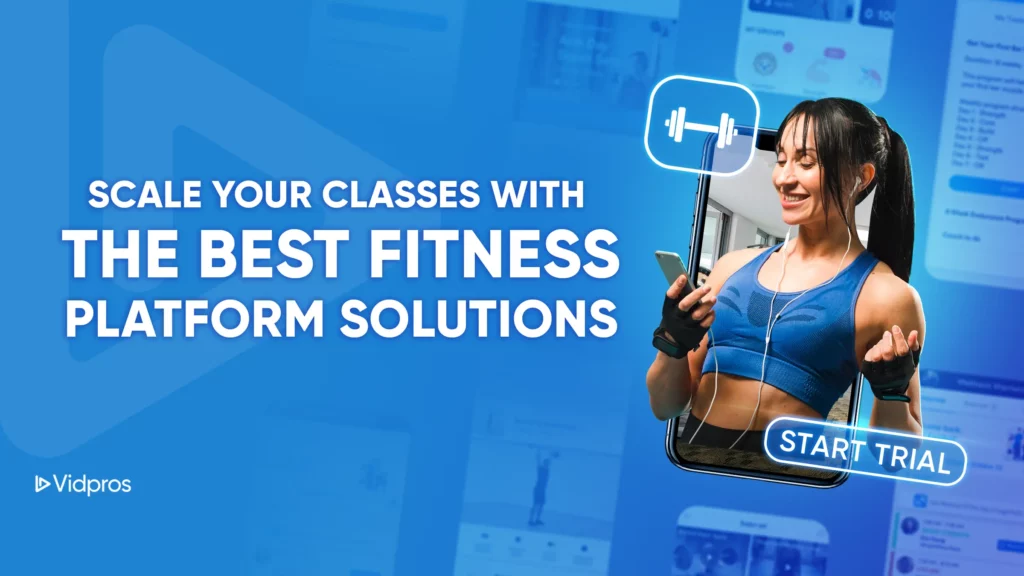Today, video is the heavyweight champion of tourism marketing. Just look at the numbers: 91% of companies now use video to promote their services, with travel-related content driving massive engagement across platforms. But why is video so effective for marketing an attractive travel destination? Let’s get into it.
Think about the last time you planned a vacation. Did you scroll through photos or watch videos of the destination? You turned to video content to get a better feel for the place. That’s because videos can capture the essence of a destination in ways that static images and text just can’t.
TLDR

What are Destination Management Organizations?

Before we explore video strategies, let’s clarify what a DMO is.
A Destination Management Organization (DMO) coordinates all the elements that make a destination attractive to visitors. Whether they’re called tourist boards, tourism authorities, or Convention and Visitors Bureaus, these organizations work at three different levels:
-
City-level DMOs. Focus on promoting and managing tourism for specific urban areas. These organizations, like Visit Dubai, handle everything from local event coordination to managing visitor centers. They work closely with local businesses, attractions, and service providers to create a cohesive visitor experience. City-level DMOs are often the first point of contact for tourists and play a key role in shaping the visitor’s immediate experience.
-
Regional-level DMOs. Like Visit California, oversee tourism for larger geographical areas, including multiple cities, towns, and natural attractions. These organizations coordinate broader tourism initiatives, manage regional marketing campaigns, and ensure that different areas within their region work together rather than compete. They often create themed routes or multi-destination experiences to encourage visitors beyond one city.
-
National-level DMOs. Tourism Australia, operates enormously, promoting entire countries as tourism destinations. These organizations handle international marketing campaigns, coordinate with diplomatic missions, manage country-wide tourism policies, and work to maintain national branding across all tourism initiatives. They also play a crucial role in crisis management and maintaining the country’s reputation as a travel destination.
DMOs often collaborate with public and private entities through destination marketing efforts to enhance the appeal of a destination.
These are the tourism umbrella with five key responsibilities.
-
They develop marketing campaigns showcasing a destination’s cultural and natural assets across all channels.
-
They manage tourism development by balancing infrastructure and sustainability with resource management.
-
They are the mediators between all the stakeholders from hotels to local government and tourism boards to ensure everyone benefits from visitors and the community.
-
They deliver visitor services from digital guides to welcome centers and maintain quality through staff training and engagement programs.
-
They manage crises by coordinating emergency responses and developing recovery strategies for natural disasters, health emergencies, etc.
Why is Video Marketing Essential?

Today, video marketing has become an indispensable tool for Destination Management Organizations (DMOs) aiming to promote their destinations and attract visitors. With the rise of social media and online platforms, video content has emerged as a cornerstone of effective marketing strategies.
Videos have the unique ability to showcase the essence of a destination, creating an emotional connection with potential visitors. Whether it’s a breathtaking aerial view of a scenic landscape or a heartwarming story of a local artisan, video content can captivate audiences in ways that text and images simply cannot.
With video marketing, DMOs can increase brand awareness, drive engagement, and ultimately attract more visitors to their destination. It’s not just about showing a place; it’s about making viewers feel like they are already there, experiencing the magic firsthand.
Know Your Audience: The Key to Engaging Content

Email subscribers have different preferences, and travelers consume video content in various ways. Some like quick, snackable content on TikTok and Instagram Reels, while others dive deep into long-form YouTube documentaries. And then there’s the growing segment interested in immersive VR experiences.
Understanding these preferences is crucial. Consider this: an adventure seeker might scroll past your detailed cultural documentary but stop for a 30-second adrenaline-pumping clip. Meanwhile, a history buff might spend hours watching in-depth content about local heritage sites.
Effective marketing efforts require a deep understanding of these audience preferences to strategically plan and execute initiatives that engage and attract target audiences.
Types of Videos That Convert
When it comes to marketing a tourist destination, certain types of videos perform well:
-
Destination overview. Videos are your destination’s highlight reel but are more than just pretty footage. Take Visit Singapore’s “Think You Know Singapore” campaign didn’t just show tourist spots; it challenged preconceptions about the city-state. These videos should tell a story that captures your destination’s essence in minutes. Include a mix of iconic landmarks and unexpected discoveries and always focus on experiences rather than just places.
-
Seasonal showcases. Create urgency by highlighting time-specific experiences. When you show cherry blossoms in Japan or Northern Lights in Iceland, you’re not just showing beautiful scenery, you’re giving viewers a reason to visit now rather than later. These videos should include practical information like best viewing times and locations while maintaining their inspirational appeal.
-
Local culture stories are your authenticity anchors. Instead of just showing tourist spots, share real stories from local artisans, chefs, or guides. Film a local chef preparing traditional dishes while sharing family recipes or follow an artisan creating traditional crafts while explaining their cultural significance. These videos help viewers develop an emotional connection to your destination before they even arrive.
-
Hidden gems videos. Require a different approach partner with travel influencers who can reveal lesser-known spots in a way that feels authentic and discoverable. Show secret viewpoints, local favorite restaurants, or off-the-beaten-path attractions. The key is to make viewers feel like they’re getting insider knowledge that most tourists cannot access.
Platform-Specific Marketing Strategies That Work

Each platform has its secret sauce for success, and understanding these nuances can make the difference between content that performs and content that gets lost in the noise. In the tourism industry, platform-specific strategies are crucial for driving local economic growth and effectively managing visitor engagement.
YouTube
It’s the perfect platform for comprehensive content that deepens what makes your destination unique. Create detailed destination walkthroughs that take viewers virtual tours of neighborhoods, attractions, or themed routes. These can be 10-15 minutes long, giving you ample time to show multiple locations while keeping the viewer interested.
Comprehensive activity guides on YouTube should go beyond just showing the activity, they should include practical details like the best times to visit, pricing, booking information, and insider tips. For example, if you’re showing a hiking trail, include information about difficulty levels, required equipment, and seasonal considerations.
In-depth local culture explorations perform well on YouTube.
Create mini-documentaries about regional traditions, festivals, or historical events. These videos can include interviews with local experts, historical footage, and demonstrations of cultural practices. Remember to optimize your titles, descriptions, and tags for search, YouTube is the second largest search engine in the world, after all.
Use Instagram as your visual storyteller, but remember that success here requires a multi-format approach:
-
Quick, engaging Reels should grab attention in the first three seconds. Show your destination’s most photogenic spots, unique experiences, or surprising moments. Use trending music and transitions, but make sure they enhance rather than overpower your content. Go for 15-30-second videos that leave viewers wanting more.
-
Behind-the-scenes Stories give viewers an unfiltered look at your destination. Share morning market preparations, sunset time-lapses, or local event setups. Use Instagram’s interactive features like polls and questions to engage viewers and gather feedback on what they want to see more of.
-
Curated destination highlights are your permanent portfolio on Instagram. Organize your saved Stories into themed collections, such as “Where to Stay,” “Local Food,” “Hidden Gems,” etc. Update these regularly and make sure they reflect current offers and seasonal experiences.
TikTok
Consider TikTok your authenticity channel where polished perfection takes a backseat to real experiences:
-
Real, unfiltered experiences perform best here. Show the experience of trying local street food, navigating public transportation, or discovering unexpected views. Don’t shy away from showing minor challenges or surprises, they make your content more relatable and trustworthy.
-
Trending travel challenges offer opportunities to show your destination in creative ways. Whether it’s a popular transition effect or a viral sound bite, find ways to incorporate your destination’s unique features into these trends. But move fast, TikTok trends change daily.
-
Quick local insights should be informative and entertaining. Share “Did you know?” facts about your destination, money-saving tips, or local customs that visitors should know. Keep these snappy and specific– you have just a few seconds to make your point.
Technical Excellence: Making Your Videos Stand Out

Tourism management plays a crucial role in ensuring the quality of services and experiences, balancing visitor needs with local community interests. Quality matters in destination marketing, but it doesn’t have to be complicated. Here’s a detailed breakdown of what to focus on:
Resolution Excellence
Match your platform’s requirements but always shoot higher quality than needed. Record in 4K even if you publish in 1080p, this gives you flexibility in post-production for cropping and stabilization. When shooting on smartphones, use the highest quality settings and invest in a simple stabilizer for smoother footage.
For standard platform specifications:
-
YouTube: 1080p minimum, 4K preferred
-
Instagram: 1080p for feed posts, 1080 x 1920 for Stories and Reels
-
TikTok: 1080 x 1920 vertical format
While many DMOs handle basic editing in-house, professional video editing services like Vidpros can help optimize content for different platform specifications, ensuring consistent quality across all channels.
Sound Quality Essentials.
Clear audio is non-negotiable in destination marketing. Invest in a decent microphone for voice-overs and interviews. Use directional microphones to capture specific elements while minimizing background noise for ambient sound. When recording in windy conditions, always use wind protection on your microphones.
Consider these audio elements:
-
Voice-over clarity for narration.
-
Ambient sound for the atmosphere.
-
Background music that reflects local culture.
-
Sound effects to enhance transitions.
Color Management
Develop a consistent color style that reflects your destination’s character. Warm tones might work better for desert destinations, while cooler tones might suit mountain regions.
Create a color grading workflow that includes the following:
-
Basic correction for exposure and white balance.
-
Style-specific adjustments for mood.
-
Platform-specific adjustments (each platform displays color slightly differently).
-
Consistent branding colors in graphics and text.
Content That Delivers
Success in destination marketing isn’t just about creating great content—it’s about strategic delivery that maximizes impact. A destination marketing organization (DMO) plays a crucial role in this by executing various marketing campaigns, managing relationships with local businesses, and utilizing storytelling to attract visitors.
Year-round Content Calendar
Plan your content like you would plan a perfect itinerary. Your calendar should account for the following:
-
Seasonal events and how to promote them effectively. Start building anticipation 2-3 months before significant events with teaser content. Follow up with behind-the-scenes preparation content and capture live moments during the event for immediate sharing.
-
Local festivals require special attention in your calendar. Create content that explains their cultural significance, shows preparation activities, and captures the actual celebrations. Plan follow-up content that shows the impact of these festivals on local communities.
-
Peak travel periods need careful content management. During high season, focus on practical tips and real-time updates about availability, weather conditions, and crowd levels. During shoulder seasons, emphasize value propositions and unique experiences available during quieter periods.
User-Generated Content (UGC)
Think of UGC as word-of-mouth marketing for the digital age. It’s authentic, relatable, and incredibly powerful. Develop a systematic approach to UGC:
-
Create a branded hashtag and promote it consistently across all channels. Monitor this hashtag daily and engage with users who use it. Feature the best UGC regularly, always with proper credit and permissions.
-
Implement a UGC rights management system to track permissions and usage rights. Consider creating a simple online form where content creators can grant permission for you to use their content.
Partnerships
Collaborate with local businesses and influencers to create a network of content creators who can showcase your destination from multiple angles:
-
Develop an influencer partnership program with clear guidelines and expectations. Look for influencers who align with your destination’s values and target audience. Consider both mega-influencers for broad reach and micro-influencers for niche markets.
-
Create a collaborative content series highlighting your destination’s unique aspects with local businesses. This could include behind-the-scenes tours of local producers, interviews with artisans, or special access to exclusive experiences.
Measuring Success: Beyond the Basics
Understanding your content’s performance requires a sophisticated approach to analytics. Here’s how to make sense of your metrics:
View-through Rates (VTR)
Don’t just celebrate high view counts, dig deeper into how long people watch your content. A high VTR means your content resonates with viewers from start to finish. Track these patterns:
-
Full-length views tell you which topics keep viewers engaged throughout. If viewers consistently watch certain types of content to the end, create more of that content. For example, if your street food tours get high completion rates, consider making a regular street food series.
-
Drop-off points reveal where viewers lose interest. If your videos have a consistent drop-off point, analyze what happens now. Is the transition too long? Is the section less engaging? Use these insights to improve future content.
Engagement Metrics Deep Dive
Likes, comments, and shares each tell a different story about your content’s impact:
-
Comments provide qualitative feedback about what resonates with your audience. Look for patterns in the comments, are people asking similar questions? Are they expressing particular interest in certain aspects of your destination? Use this feedback to inform future content decisions.
-
Shares indicate content that people find valuable enough to share with others. This often means content that solves problems or provides unique insights, track which types of content get shared most frequently and why they’re shareable.
-
Save rates on platforms like Instagram and TikTok mean content people want to reference later, often practical tips or destination guides. This metric can help you identify what type of informational content your audience finds most valuable.
Conversion Tracking
Track the journey from viewer to visitor with these key metrics:
-
Website traffic patterns show how video content drives interest in your destination. Use UTM codes for each platform to track which videos drive the most qualified traffic to your website.
-
Booking inquiries linked to specific content will help you understand which videos drive actual travel decisions. Create specific landing pages for each video campaign to track conversion rates accurately.
-
Email sign-ups from video content mean growing interest in your destination. Track which videos drive the most newsletter subscriptions or travel guide downloads.
Sustainable Production: Video Marketing in the Tourism Industry
Sustainability in video production isn’t just about being eco-friendly, it’s about being responsible and efficient. By adopting sustainable practices, production companies can contribute to sustainable tourism growth, aligning their efforts with broader environmental and economic goals.
Local Production Partnerships with Local Businesses
Working with local production teams offers many benefits:
-
Reduced carbon footprint through less travel and transportation. Local teams already know the best locations and timing for shoots, so there is no need for scouting trips and multiple visits to locations.
-
Support for local creative economies helps build a sustainable content creation ecosystem in your destination. This creates a network of professionals who know your destination and can capture it authentically.
-
Quick response capability for time-sensitive content opportunities. Having local teams means you can capture unexpected events, seasonal changes, or special moments without delay.
Eco-Friendly Production Practices
Implement sustainable practices throughout your production process:
-
Digital-first workflows eliminate the need for printed materials. Use cloud-based collaboration tools for pre-production planning, shot lists, and feedback rounds.
-
Renewable energy sources for equipment charging and power needs. Consider investing in solar charging stations for camera batteries and portable equipment.
-
Waste reduction strategies for all aspects of production. Use reusable water bottles, minimize single-use materials, and properly dispose of any necessary production materials.
Sustainable Equipment Choices
Make eco-conscious decisions about your production gear:
-
Energy-efficient lighting systems using LED technology reduce power consumption while providing professional quality illumination.
-
Durable, long-lasting equipment that won’t need to be replaced frequently. Invest in high-quality gear that will serve your needs for years rather than cheap options that need to be replaced regularly.
-
Rechargeable battery systems and power banks to minimize battery waste. Implement a proper battery maintenance and recycling program.
Capping off
Success in destination video marketing means balancing technical excellence, creative storytelling, and strategic distribution. Remember:
-
Quality is essential, but authenticity is more important.
-
Platform-specific optimization is key to success.
-
Sustainable practices add long-term value.
-
Measurement and adaptation drive continuous improvement.
Ready to get started with your destination’s video marketing? Now’s the time!
Start with a content audit and partner with professional video editing services like Vidpros. Their experienced editors can transform your raw footage into compelling content that drives results while maintaining brand consistency across all platforms.
Your destination has a unique story to tell. Use these strategies to say it in a way that reaches your audience and inspires them to be part of your story.













